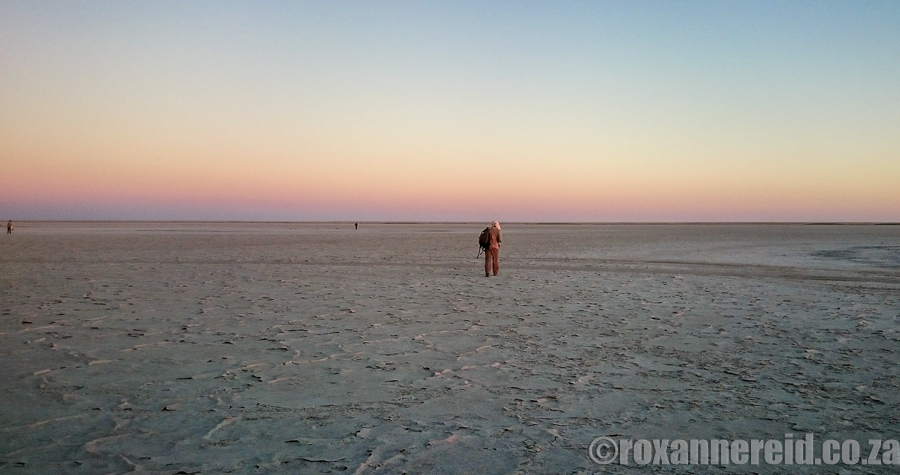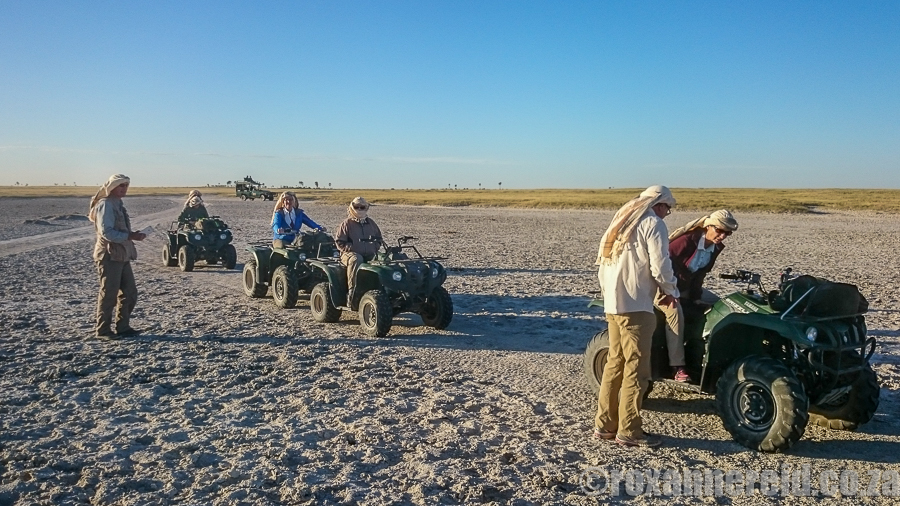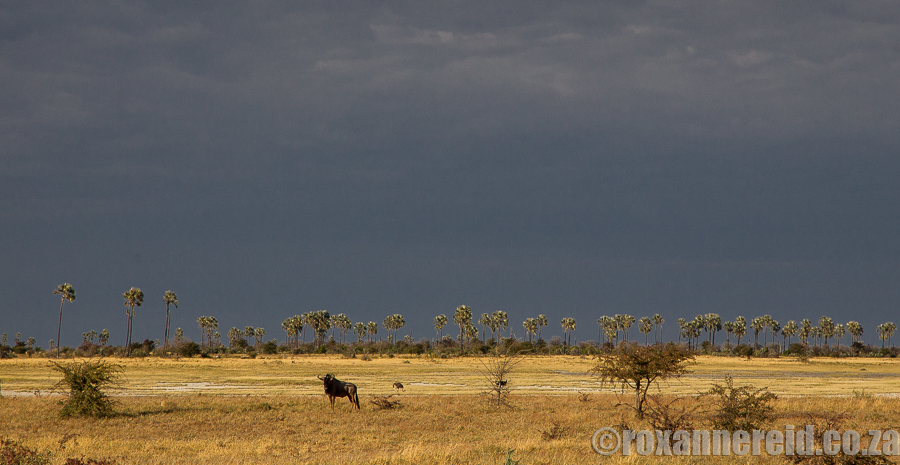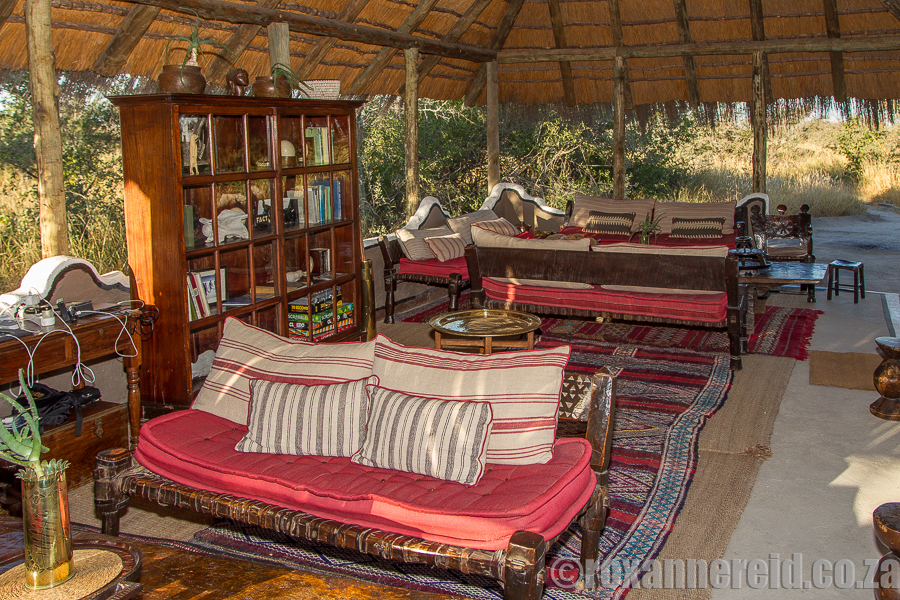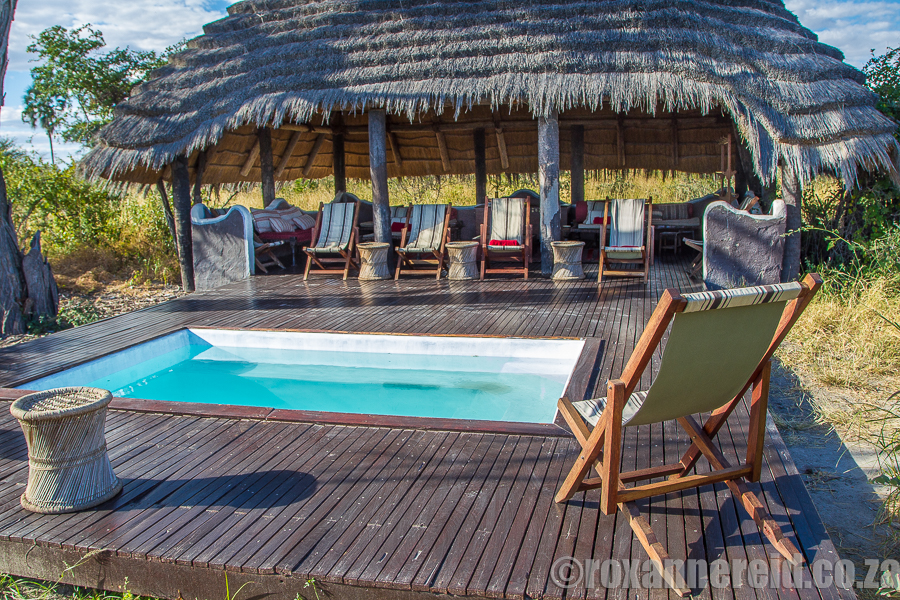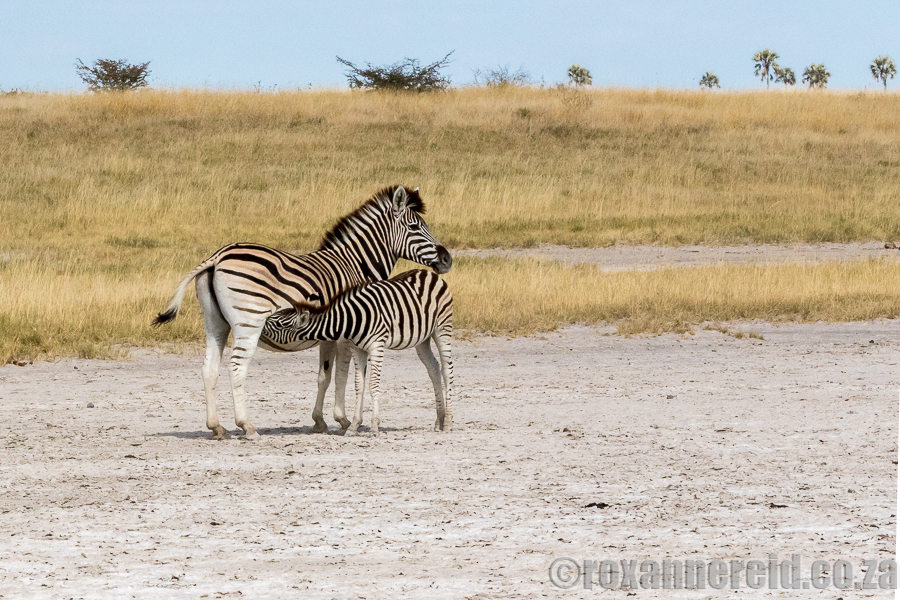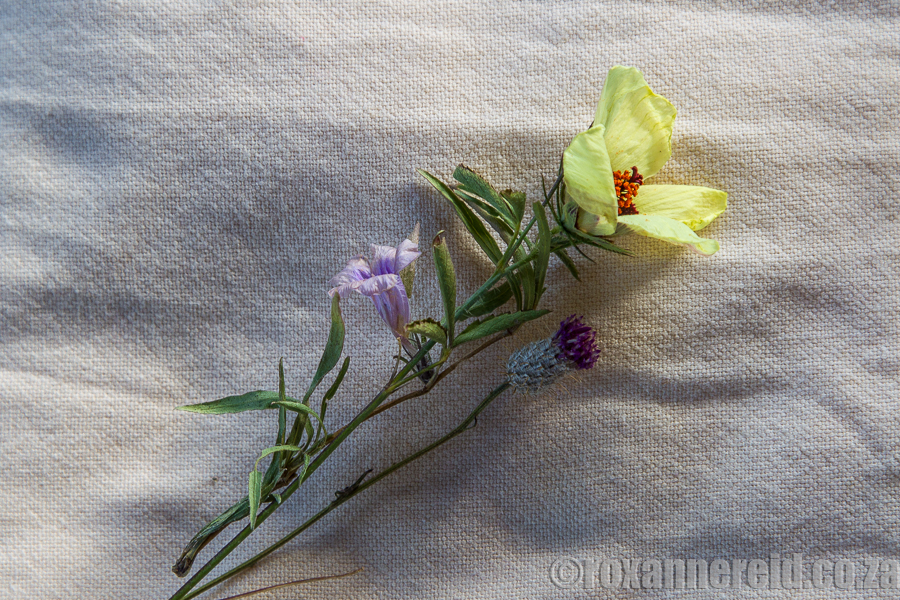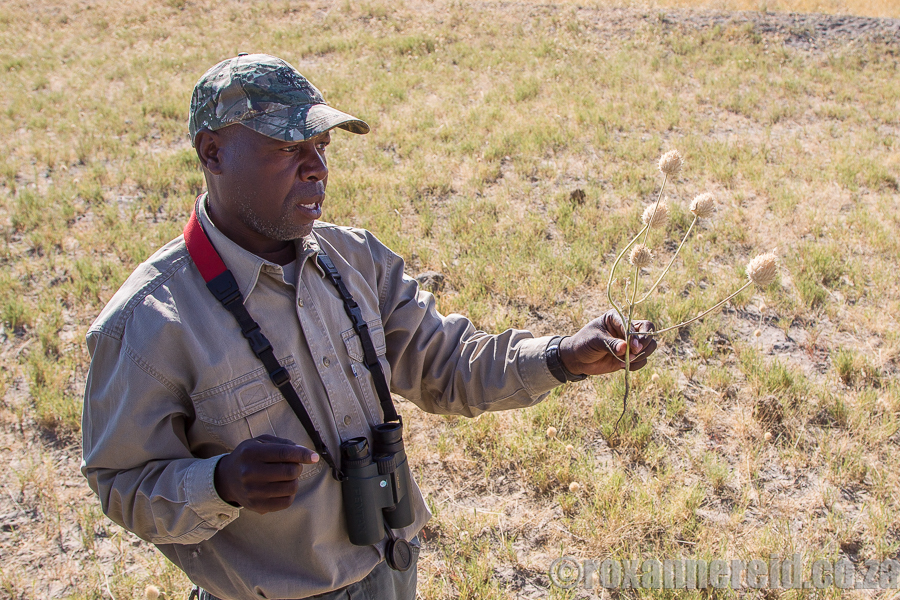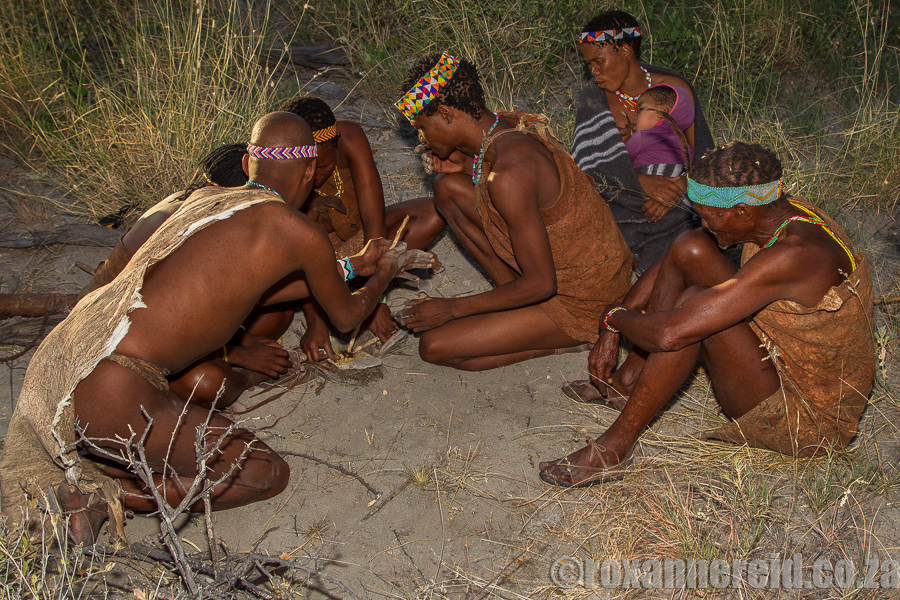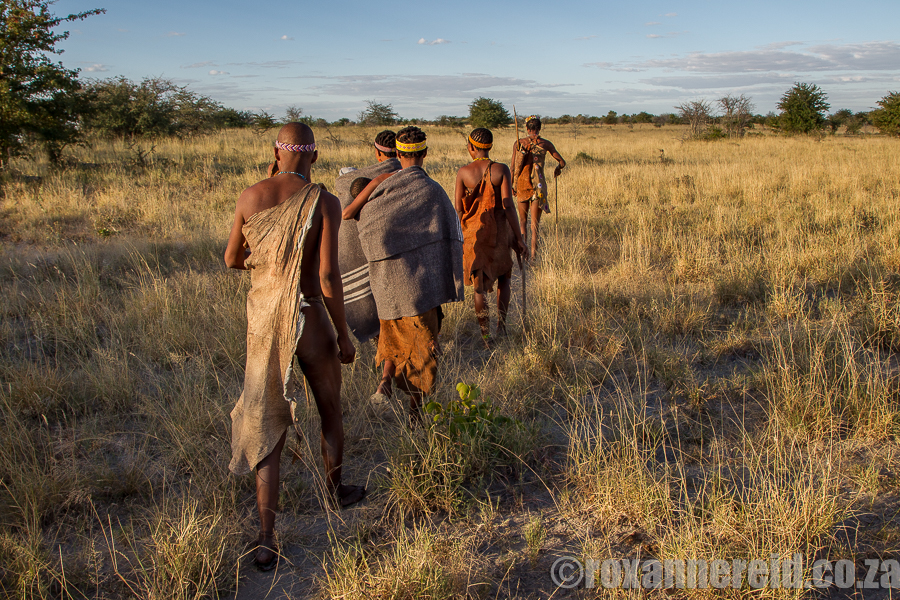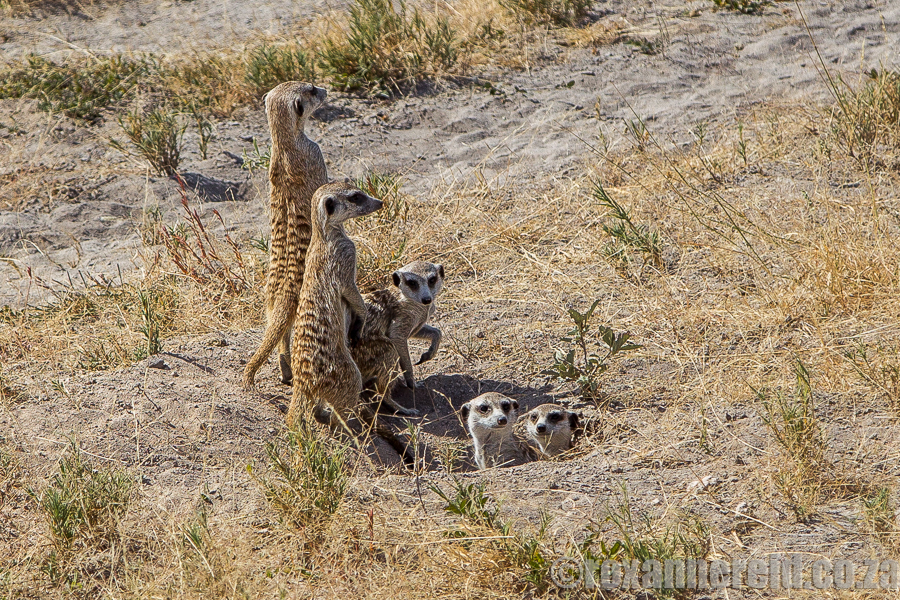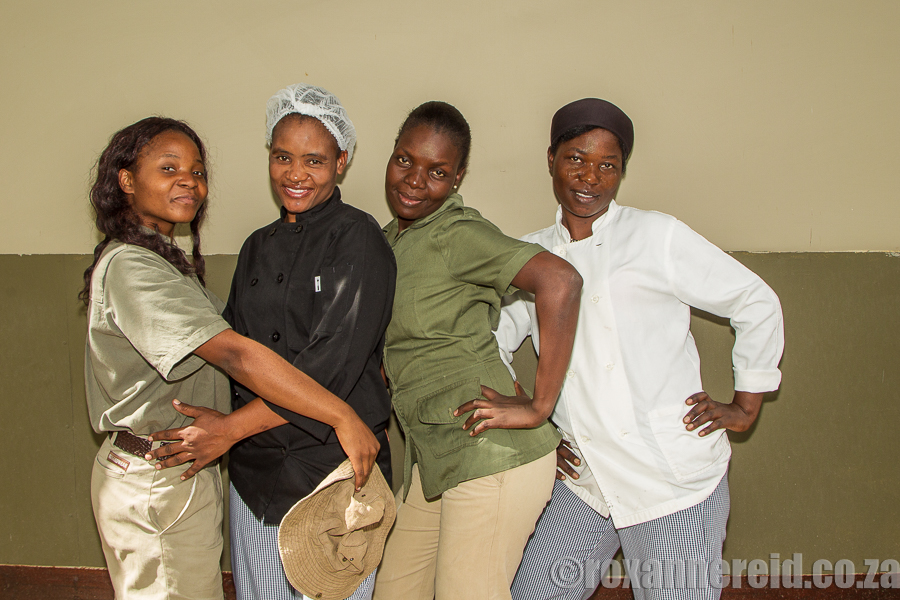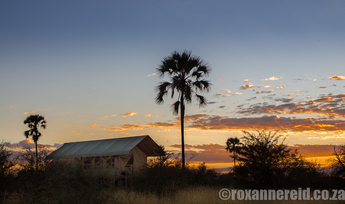
By Roxanne Reid
Crunch, crunch, the dry salt ridges of the vast Ntwetwe Pan cracked to dust underfoot. Stop. Now only the sound of the wind as it brushed past my ears. Not a bird or insect stirred, not a tree or shrub broke the horizon. I was in the Makgadikgadi, Botswana, so vast and empty it was like being on the moon.
Crunch, crunch, the dry salt ridges of the vast Ntwetwe Pan cracked to dust underfoot. Stop. Now only the sound of the wind as it brushed past my ears. Not a bird or insect stirred, not a tree or shrub broke the horizon. I was in the Makgadikgadi, Botswana, so vast and empty it was like being on the moon.
Just before sunset, a dark red band lay above the western horizon. To the east the sky turned blue-grey under ribbons of pink and lilac. We had fanned out some 100m from each other on the pan, our hands, pants and shoes covered in gritty salt pan dust. Each of us hoped to find a patch of quiet to drink in the silence and the sunset. Some sat or lay down on the pan, one struck a yoga pose.
We had travelled here on quad bikes from Uncharted Africa Safari co.’s Camp Kalahari. We’d tied our kikois Lawrence-of-Arabia-style to keep the fine dust off our face and hair. Once we were far enough out into the pan that landscape features had disappeared, we’d stopped to jump and take photos. Lacking any points of reference, we looked as though we were flying.
Back on the quad bikes we’d cast long triangular shadows on the pan as the sun slumped to the horizon. Then we’d stopped at a turning point; we would go back in the same tracks, to avoid making new ones.
Back on the quad bikes we’d cast long triangular shadows on the pan as the sun slumped to the horizon. Then we’d stopped at a turning point; we would go back in the same tracks, to avoid making new ones.
And that’s when we had our time alone with the vast salt pan, our quiet moment of reflection at sunset. Once it was fully dark we marvelled at the clear night sky. Before the moon rose we could drink in the entire southern hemisphere sky without obstruction.
The pans
Ntwetwe, Nxai, Sowa and Lake Xau all make up the white Makgadikgadi pans. Long ago the Zambezi, Linyanti and Okavango used to flow together to join the Boteti River, which continued to the Limpopo and so to the Indian Ocean. They filled the pans, which a million years ago used to be lakes up to 300m deep in places.
Then movement of tectonic plates made a ridge to the west of the pans and water could no longer pass. Water evaporated from the lakes leaving condensed minerals and salt behind. ‘There used to be people and lots of animals on the pans, and Stone Age implements are still discovered there,’ head guide Bapabi (Bacos) Taubaka at sister property Planet Baobab told us. Today the pans are filled only by rain water, except Sowa, which also gets water from the Nata River to the east.
The pans
Ntwetwe, Nxai, Sowa and Lake Xau all make up the white Makgadikgadi pans. Long ago the Zambezi, Linyanti and Okavango used to flow together to join the Boteti River, which continued to the Limpopo and so to the Indian Ocean. They filled the pans, which a million years ago used to be lakes up to 300m deep in places.
Then movement of tectonic plates made a ridge to the west of the pans and water could no longer pass. Water evaporated from the lakes leaving condensed minerals and salt behind. ‘There used to be people and lots of animals on the pans, and Stone Age implements are still discovered there,’ head guide Bapabi (Bacos) Taubaka at sister property Planet Baobab told us. Today the pans are filled only by rain water, except Sowa, which also gets water from the Nata River to the east.
The camp
Camp Kalahari is one of a quartet of Uncharted Africa Safari co. camps in the Makgadikgadi. There was good food, lots of wood, colourful sofas and camp chairs around the fire in the common area, and a pool deck off to one side.
Camp Kalahari is one of a quartet of Uncharted Africa Safari co. camps in the Makgadikgadi. There was good food, lots of wood, colourful sofas and camp chairs around the fire in the common area, and a pool deck off to one side.
Out of Africa-style tents on raised wooden decks had a traditional safari atmosphere with ticking bedspreads, kelims and big wooden chests. I lay down one afternoon for a short siesta and heard the roof squeaking in the breeze, the zebras and red-billed spurfowl calling.
Out and about
The landscape in the semi-arid Makgadikgadi is mostly grassland with mokolane palms and purple pod terminalia. Here secretary birds walk 20-30km a day in search of food like snakes, small birds and reptiles, and steenbok have adapted to the dry conditions by digging tubers and eating grass early in the morning when it has more moisture so they don’t need to drink.
More than 20 000 zebra and 10 000 wildebeest migrate here in search of good grazing after the first summer rains. It’s not much less spectacular than the Serengeti migration but a lot less well known. ‘They enjoy the Kalahari spike grass that grows here,’ said guide Fanuel Shawa. ‘See these salt crystals on the grass? They eat this then they don’t need a salt lick.’
The landscape in the semi-arid Makgadikgadi is mostly grassland with mokolane palms and purple pod terminalia. Here secretary birds walk 20-30km a day in search of food like snakes, small birds and reptiles, and steenbok have adapted to the dry conditions by digging tubers and eating grass early in the morning when it has more moisture so they don’t need to drink.
More than 20 000 zebra and 10 000 wildebeest migrate here in search of good grazing after the first summer rains. It’s not much less spectacular than the Serengeti migration but a lot less well known. ‘They enjoy the Kalahari spike grass that grows here,’ said guide Fanuel Shawa. ‘See these salt crystals on the grass? They eat this then they don’t need a salt lick.’
We had an overly talkative guest on our safari vehicle, which made it hard for our guide to get a word in. But if you gave him a chance and showed an interest in plants, he could tell you lots about them. The African paintbrush, a purple thistle-like flower, attracts lots of butterflies. The tubular mauve carpet flower is so-called because of its creeping habit. And although animals don’t eat turpentine grass the turpentine chemical keeps it waterproof so it’s used for thatching houses.
We also learnt that the lilac-breasted roller is the bird of peace in African lore, while the dove is the bird of war. When warriors make peace they cut open the roller, put blood on their spears and bury them, with the bird on top to seal the peace.
Our two days at Camp Kalahari allowed us to spend some time with Zu/’hoansi Bushmen and learn a little about their culture. It showed us the mating display of tawny eagles, let us see wild meerkat and follow a clan of habituated meerkat to learn how they forage and interact.
But we were disappointed not to see Makgadikgadi specials like brown hyena or aardvark. We were just unlucky; other guests went with their guides into the Makgadikgadi National Park and saw not only brown hyena and aardvark but lions too. That’s safari for you – the luck of the draw!
Note: I was a guest of Uncharted Africa Safari co. for two nights, but the opinions are mine.
You may also enjoy
Highlights of the Makgadikgadi
Copyright © Roxanne Reid - No words or photographs on this site may be used without permission from roxannereid.co.za
You may also enjoy
Highlights of the Makgadikgadi
Copyright © Roxanne Reid - No words or photographs on this site may be used without permission from roxannereid.co.za
